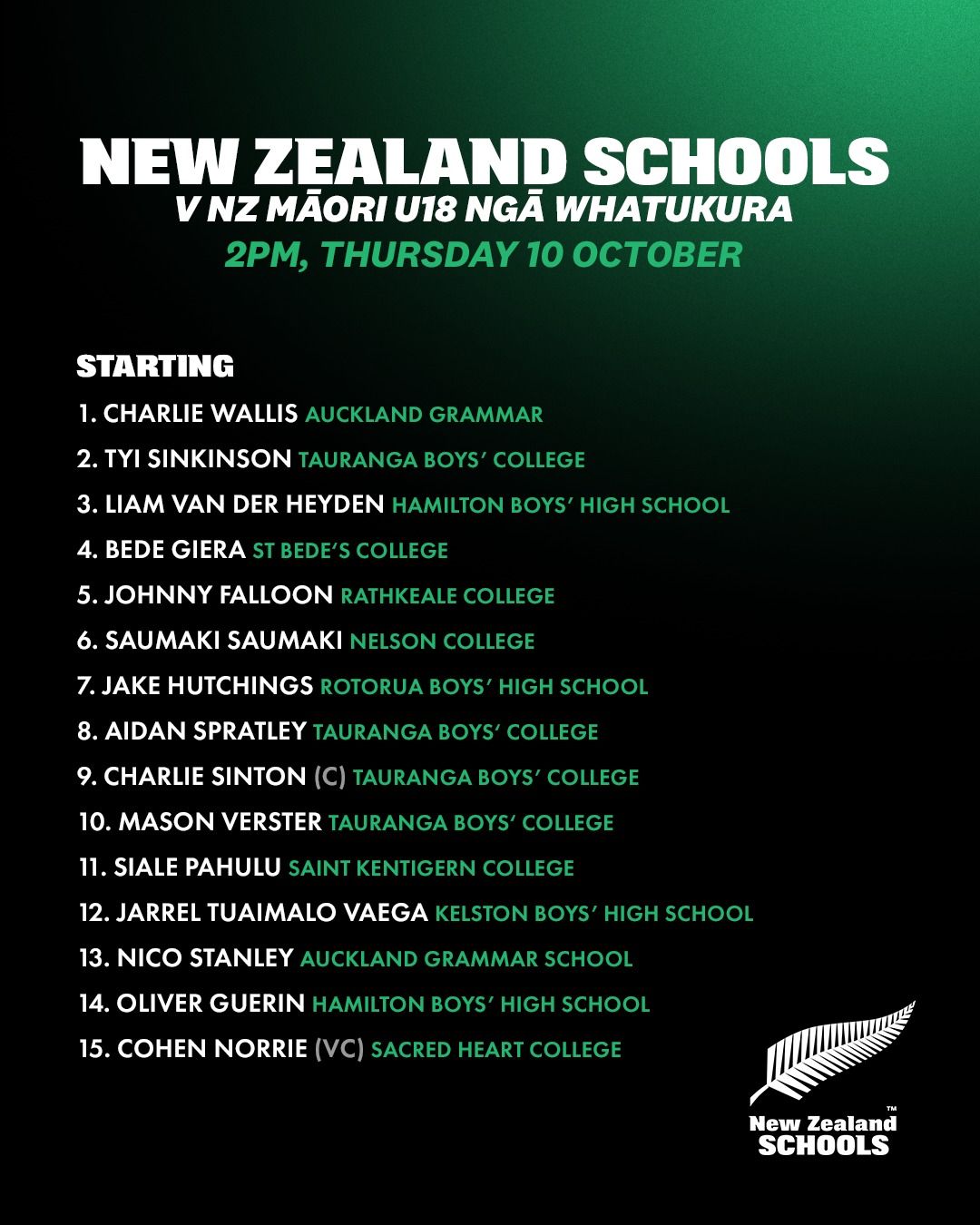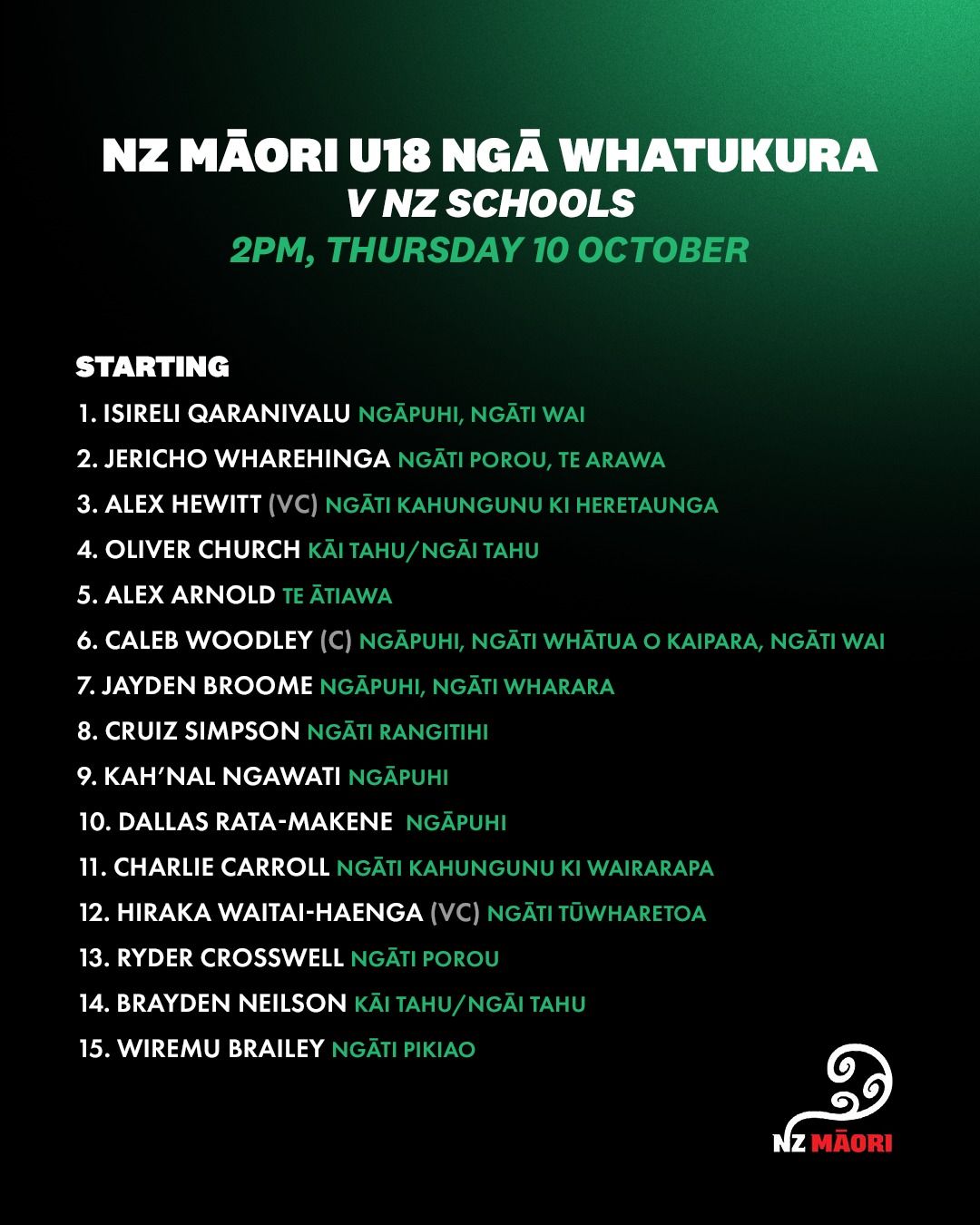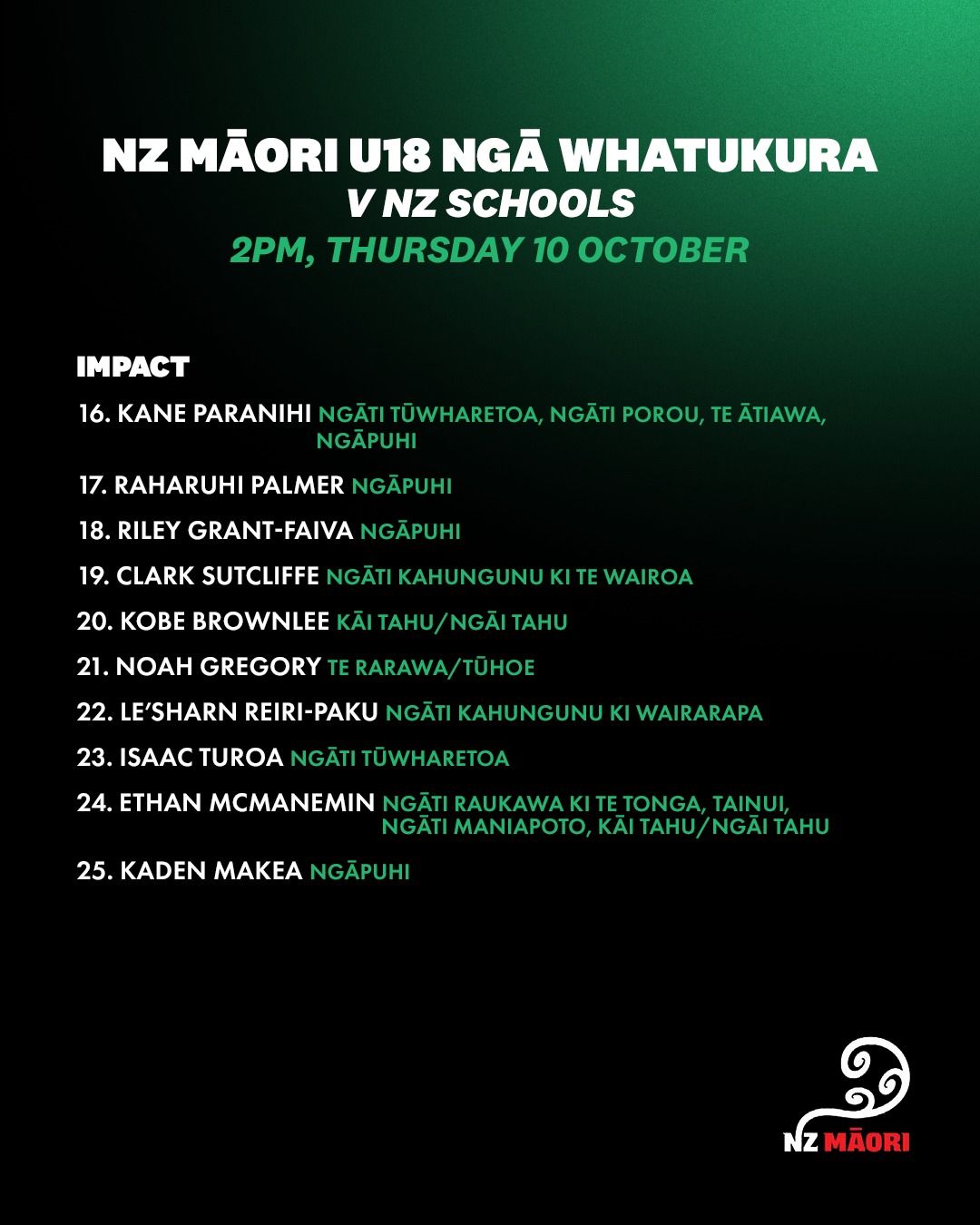2024 NZ Schools Rugby
-
@KiwiMurph said in 2024 NZ Schools Rugby:
Aus U18s beat NZ Schools by the sounds.
Yep, 38-31 to Australia but NZ Schools scored a late try. As @Magic65 said, NZ got outplayed up front as the Aust forwards were more physical and their ball-carriers constantly made ground. The likes of Saumaki were much quieter in this game. I also think that Inch was better than Verster in game management.
Compared to last year, this is a weaker NZ Schools team and lacked the x-factor players like Mathis and Simpson who had such a big influence in the two wins in Aust. The NZ Barbarians U18s would be capable of beating them.
The other results were:
Māori U18s 53 - 24 NZ Heartland U20s (HT: 17-17)
A close 1st half as the scoreline suggests but the Māori ran over them in the 2nd half with plenty of long-range tries. The lack of fitness of some of the Heartland U20 players was noticeable. Probably to be expected given where they play and their limited preparation.NZ Barbarians U18 102 - 10 Samoa U18 (HT: 43 - 7)
The scoreline says it all. Samoa never stopped trying but their limited player pool means they will always struggle. You would find a stronger team from 1A and 1B schools in South Auckland. -
@Magic65 said in 2024 NZ Schools Rugby:
Eli Langi
This is the kind of player I feel who is often missing in these NZ age grade teams: tall and athletic, but equally with a big engine and physically abrasive. He would make a world of difference to this NZ Schools side.
-
I think a lot of credit also has to go to this Australia U18 side. Their accuracy and organization was impressive, making the NZ Schools execution errors stand out a lot more.
RA seem to have invested considerable resources to a more centralized rugby academy system - development camps, U16 and U19 comps, player of national interest program - so it's good that it's bearing fruit. The Australia U18 side looked like a cohesive and well-drilled team.
At the moment, NZ Rugby are trying to have their cake and eating it too, retaining NZ Schools as the primary side while using the Barbarian U18 team as a pseudo-high development team. It has its merits. But then you're left with two decently strong teams, who are both beaten by the side which has put all of its eggs into the single high-performance basket.
-
@Mauss said in 2024 NZ Schools Rugby:
RA seem to have invested considerable resources to a more centralized rugby academy system - development camps, U16 and U19 comps, player of national interest program - so it's good that it's bearing fruit. The Australia U18 side looked like a cohesive and well-drilled team.
Just in time for league to take them back 😬
-
@NTA Yeah, that's rough, eh? The only hope is that players enjoy the high-performance environment, so if you have good structures and, subsequently, good results, at the very least they're a bit more likely to stay.
Can't see how they hang on to Lemoto and Makasini, though. They'll be highly sought after.
-
@Mauss said in 2024 NZ Schools Rugby:
@NTA Yeah, that's rough, eh? The only hope is that players enjoy the high-performance environment, so if you have good structures and, subsequently, good results, at the very least they're a bit more likely to stay.
Can't see how they hang on to Lemoto and Makasini, though. They'll be highly sought after.
A lot of kids in private schools playing at a high level are there on the NRL chequebook.
The old school ties bemoan them "leaving Rugby" but they were never "Rugby" to start with
-
@NTA said in 2024 NZ Schools Rugby:
A lot of kids in private schools playing at a high level are there on the NRL chequebook.
Does that make them "league", though? I'm sure a lot of players enjoy both codes while they're at school (Saumaki, Pahulu and Vaega also have ties to league in the NZ Schools team).
RA doesn't have the funds of the NRL. But if they're smart with their targeting of players - like they did with Goldsbrough and Jorgensen - they can get the occassional player. But they have a long way to go, though, and they don't seem to be particularly capable either.
But with a result like today, I think it's fine to give them some plaudits.
-
So I rewatched the NZ Schools game. It wasn’t pretty viewing, as you’d expect. NZ Schools first three possessions of the game all led to turnovers: Verster throws a miss pass when it wasn’t on, leading to Pahulu going rather meekly into touch; then, Verster, playing under advantage, tries an attacking chip with zero deception (the subsequent attacking lineout is lost because of a baulk); in the third possession, Sinkinson passes out the back to an unexpecting Saumaki who drops the ball. When they finally decide to turn to the kick as everything else isn’t working, Norrie kicks it out on the full after it was passed back inside the 22 by Verster, leading to an attacking Australian lineout. When it rains, it pours. And it didn’t get much better after that, unfortunately. So it was a rough watch.
I thought I’d share some notes, if anyone would be interested in reading them. What stood out to me was the NZ Schools defence, especially its breakdown in communication at certain times, of which I’ll try to give a few examples. This was further compounded by some clever Australian attack, which was able to identify similar weaknesses in both NZ Schools and Barbarian U18 defence, in its earlier game.
The first Australia U18 try would be a good place to start. Gold has a lineout on the NZ 22, a simple throw to Langi in the middle pod leads into a straightforward Lemoto carry (where he pretty much demolishes Sinkinson). After two quick rucks inside the NZ 22, Grover, the Aussie 9, throws a long pass wide and this is the state of the NZ defensive line:
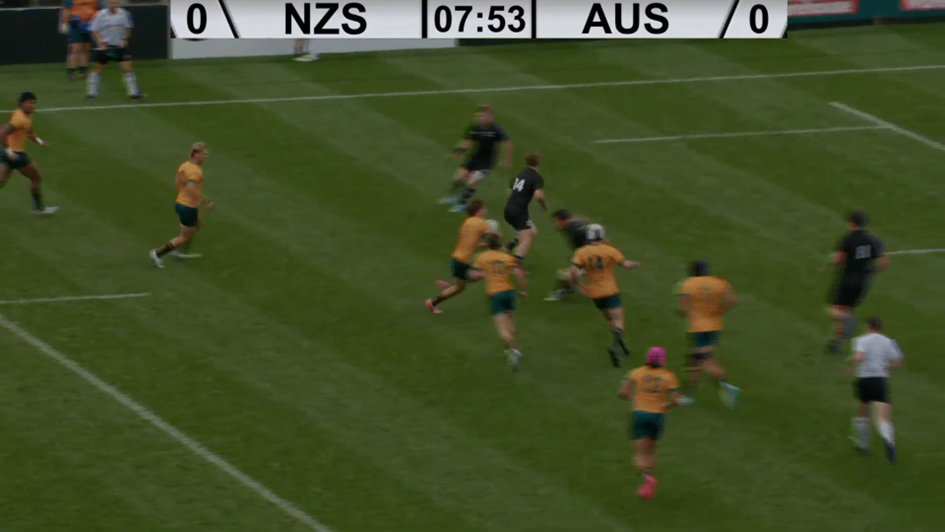
Aussie alignment and Kiwi chaosStanley has shot up to make the spot tackle in the hopes of disrupting the Aussie overlap, Guerin has his back turned to the play and Wallis is disconnected from the defensive line. The predictable result: Bassingthwaighte waltzes between Stanley and Wallis to run in pretty much untouched. The basis of this try is the power of the Lemoto carry and the Grover snipes around the ruck but it’s made easy by the lack of communication and connection between the NZ Schools defenders. When you have lone ranger-defenders (Stanley) going alone because the situation is so desperate, then there’s been a bad breakdown in defensive responsibilities.
Another example is the series of events which is probably most indicative of the game as a whole. It displays NZ Schools' lack of patience in attack, their lack of communication in defence and Aussie U18s ability to pounce on these mistakes. The sequence occurs around the 21 minute mark. After 15 minutes of hectic and erratic play, NZ Schools pulls off a great backline move, Norrie getting around his man and nicely putting Stanley through the gap, the passage of play leading to a Verster try. They have a good restart and are working themselves all the way up to the Aussie U18 tryline, only for Spratley to attempt an overambitious placing of the ball (when recycling the ball and setting up the next phase would’ve been the much safer bet), leading to a knock-on and an Australian goal-line dropout. In the subsequent sequence, Spratley has a run-up receiving the drop-out (not making a dent in the defensive line), Sinton throws a low pass to Stanley who drops it. A scrum ensues where the ball is quickly released by the Aussie 9 and for some reason, the NZ Schools scrum keeps pushing even though the ball is already on the other side of the field. This is the situation after the first ruck post- scrum:
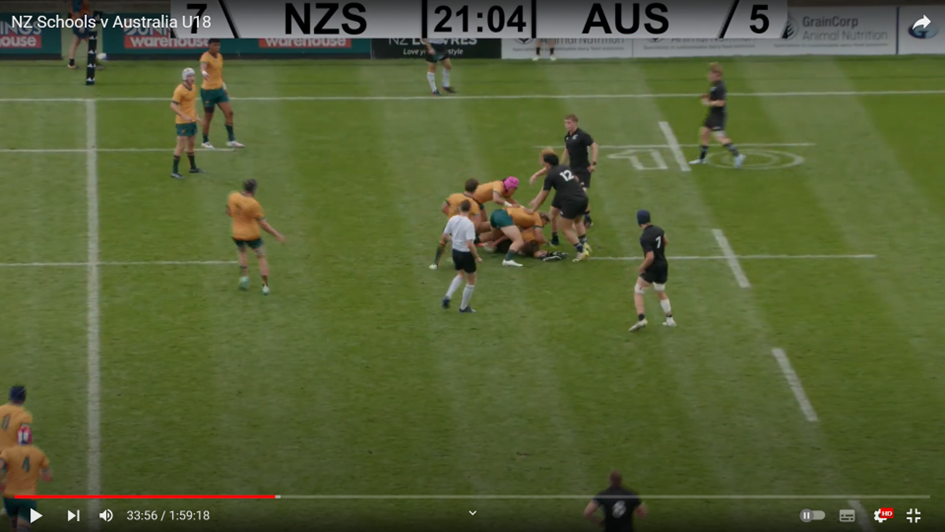
I’m pretty sure you can fit the Titanic through this defensive gap. More than enough room for HMS Lemoto.There is about 15 metres of space between the first and second defenders outside the ruck (Keith and Spratley), which is, understandably, easily exploited by Heinz Lemoto. Again, the foundation is a breakdown in communication. Typically, the 9 shouts ‘break’ when the ball is released, signalling for his loose forwards to detach from the scrum and get into the defensive line. While I can’t pick everything up from the ref mic, Sinton does shout ‘hold’ twice before sprinting off. While Sinton is a very eager and willing defender for a 9, his first responsibility is still to organize and direct his forwards. It would be easy to blame Spratley for his tardiness but what really causes this wide defensive gap is a breakdown in communication between the 9 and his pack.
The irony of these examples is that I really don’t think Australia U18 needed this communicative breakdown to excel. They showed plenty of examples of clever play and identification of opportunities. I’ll limit myself to one example, a try in this game which was a near-exact copy of one in their game against the Barbarian U18s. The sequence starts with a missed kick at goal by Fowler. In the following restart, Lemoto carries Spratley with him for about five metres (there’s a theme here), after which Bassingthwaighte attempts a grubber through which deflects off of Saumaki into the open where it is collected by an Aussie U18 player. Again, an NZ Schools defender, Falloon, shoots up alone without anyone following or a cohesive line behind him:
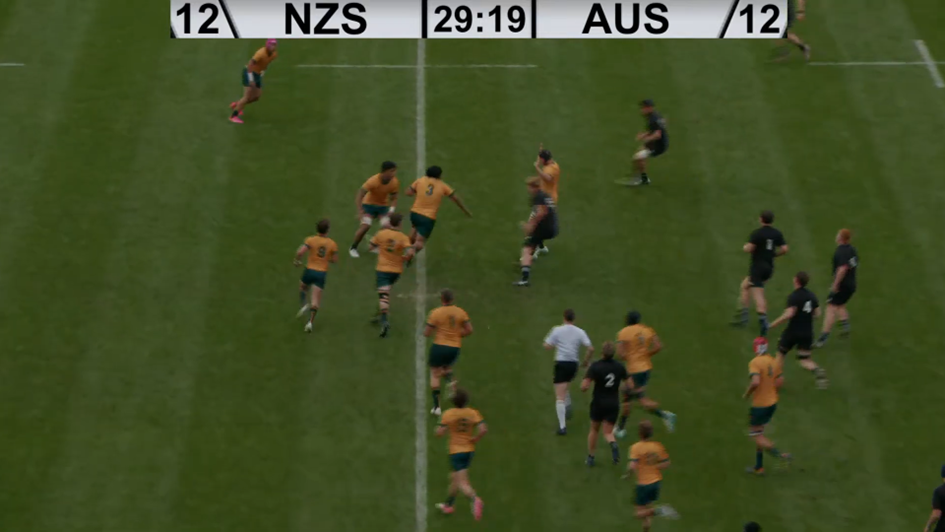
Ceci n’est pas une ligne défensive.The resulting linebreak is easy enough and after a number of ineffective phases around the NZ 22, the Aussie U18s set up a short switch play where they slightly fracture the NZ Schools defence. What is interesting about this movement is that Australia U18 ran a very similar set against the NZ Barbarians U18s, where they played a couple of phases in the area around the Barbarian 22 before trying a switch pass against the grain. While the Barbarian U18s read this play much better – leading to Edwin Langi being smashed behind the gainline – the desired result was ultimately the same: the created expectation of a quick pass out of the ruck by the 9 and the added attention to possible switch plays. Then, what Grover was really looking for was the lock 5 as the pillar defender:
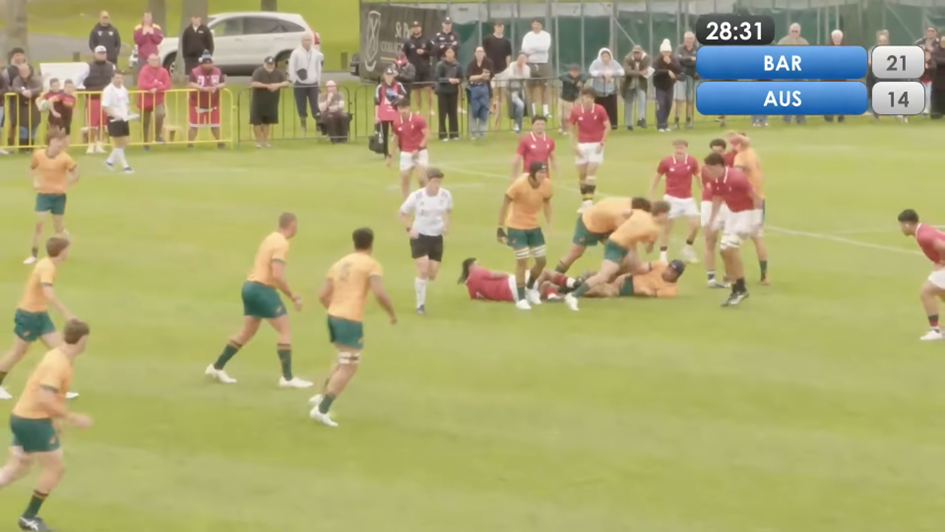
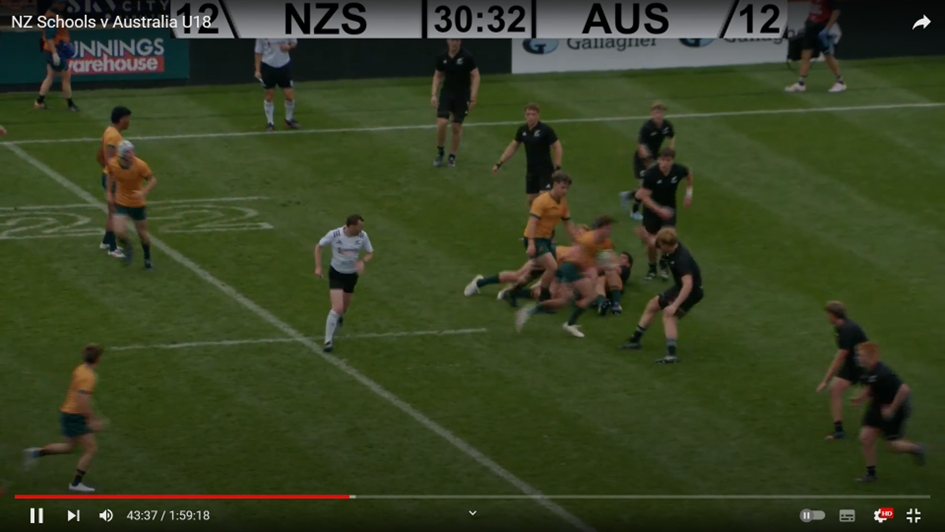
Spot the difference. Grover identifies the 5 lock as pillar defender and sneaks through, both sequences leading to tries.Both Falloon and Frazer Brown, the Barbarian U18 5 lock, were tasked throughout their games with being aggressive defenders, shooting out of the line and putting pressure on the opposition playmakers. I think that Grover is aware of the fact that this responsibility makes their role as pillar defenders more complicated, taking advantage of this responsibility-overload to sneak through around the ruck. This was not so much a breakdown in NZ Schools communication as it was beautifully executed manipulation of the defence.
So, those are some things I noticed and found interesting in the game. I still don’t think this is a bad NZ Schools team though, by any means. Guerin, Pahulu, Stanley and Norrie all seem like supremely talented athletes. Sinton, although he made a lot of mistakes in this game, is still a quality player who will hopefully learn a lot from the experience. Aio Keith always impresses me when I see him play, if only for the sheer levels of shithousery he gets up to. The forwards will bulk up and get their chances. The team as a whole just seemed to be a little underprepared, of which I think the lack of communication is a prime symptom.
If NZ Rugby wants to keep its current team structures intact, it would probably be best to have the NZ Schools team and NZ Barbarians U18s play against each other in a genuine match. I know they played and trained together in camp but a genuine game would have a lot more intensity and would serve as proper preparation for the other games. The upcoming game against the Māori U18 team should be a good contest.
I know this is way too much text and probably not in the spirit of the forum. But what can I say, I like writing and I like reading. Maybe there are others who are the same. Either way, I think I’m going to take a little break now. I’ve spent way too much time on watching these games and writing these posts. Good fun though.
-
-
The Chiefs U18 squad is below. It would be somewhere between a B and C team in strength with a large number of players from the NZ Schools, Barbarians U18s, and the Māori U18 missing. The rain started before kickoff and continued in the 1st half so handling was difficult. Samoa had their moments again but the Chiefs were always dangerous when they held on to the ball. Centre/winger David Lewai (pictured) scored 4 tries. The scrum was dominant. All but three players were subbed at HT although some of the replaced players returned late in the 2nd half.
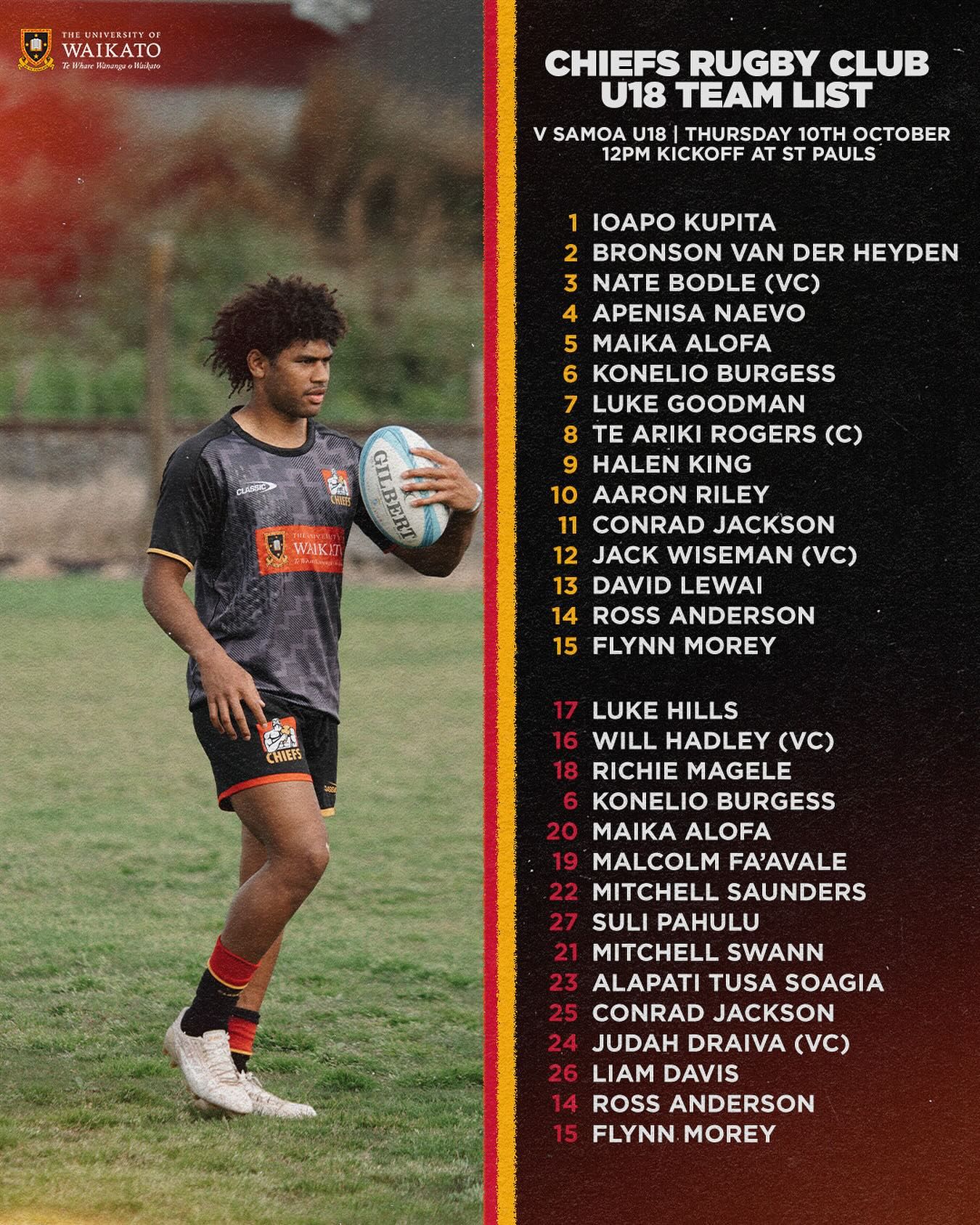
-
I wasn’t originally planning on closely watching the game between NZ Schools and the Māori U18s but, after seeing the game on Thursday, I felt like the efforts of the Māori Under 18 Ngā Whatukura team deserved some more attention.
But first, I’d like to give a quick follow-up on the NZ Schools team. Against Australia U18, it was noticeable how they were disconnected in defence, often shooting up alone without any sort of organized defence behind them. Against the Māori U18s, this disconnection appeared in attack as well, with a lack of coordination between carriers and cleaners, and a lack of trust in each other when attacking opportunities presented themselves. To give just one example: right before half time and behind 8 to 19 on the scoreboard, NZ Schools has an attacking scrum around the halfway line, a great place to set up a strike play and get into the opposition 22. The scrum is dominant, Sinton passes to Tuaimalo Vaega who passes out the back to Norrie – wearing 15 on his back but playing as the first five in this game – and this is the situation:
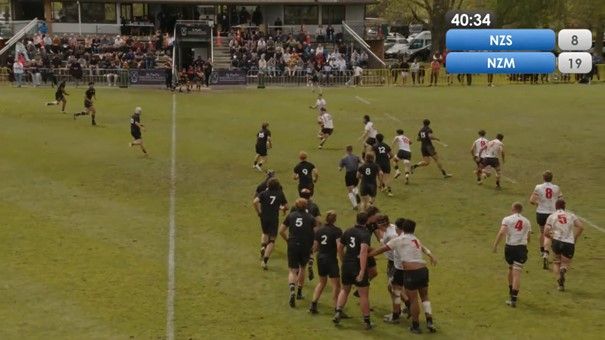
Norrie has both the space and the numbers to his left but doesn’t pull the trigger.The strike move has resulted in an attacking overlap on the left, with three black players facing 2 white defenders. The Māori defence is also drifting rather than pressing, meaning that there is plenty of space to work with, with the possibility of going through the hands or having Verster, in the white headgear, making the cut-out pass. Instead, Norrie doesn’t pull the trigger, tucks and goes for the carry straight into the defender, Haitai-Waenga, who easily stops him. NZ Schools then recycle the ball for another 6, largely ineffective phases around the 10-metre line, before the Māori U18s are able to get a breakdown steal and boot the ball into touch for halftime.
I’d argue that Norrie’s reasons for his conservatism here are rooted in a broader loss of confidence within the team, their inability to efficiently retain possession in both this game and the previous one making them hesitant to spread the ball. Hoping to build momentum through keeping the ball, it had the opposite effect, making the NZ Schools attack highly predictable and vulnerable at the breakdown. The constant interchange at the first five-position throughout these three games – first Inch, then Verster, then Norrie – disrupted the fluidity of the attack and the organization of the backline, with very little attacking shape being discernible throughout the game nor tactical variation employed through the halfbacks’ kicking game.
This stood in stark contrast to the Māori U18 team, their identity as a team built on two clear-cut pillars: the efficient use of strike plays off of set-piece to score points and a steely defensive resolve, built on work-rate and an intense contestation of the breakdown. These two pillars each came to the fore in different halves: in the first half, the Māori U18 scored three tries off of strike plays. In the second half, they made a collective 84 tackles (my own recorded stats, so give or take on accuracy), many of them on their own try-line, only conceding the one try to Aio Keith 10 minutes before the final whistle.
The strike plays themselves were simple but effective: a back peel off a lineout in the NZ Schools 22 down the blindside led to a line-break and a number of phases on the NZ Schools try-line, before Rata-Makene goes over after the Schools defence became compressed. For the second strike play, with an attacking Māori U18 lineout close to the line, they went with the old “McCaw in South Africa”-move, where a lineout fake to the back leads to space in the middle for the receiver to run through.
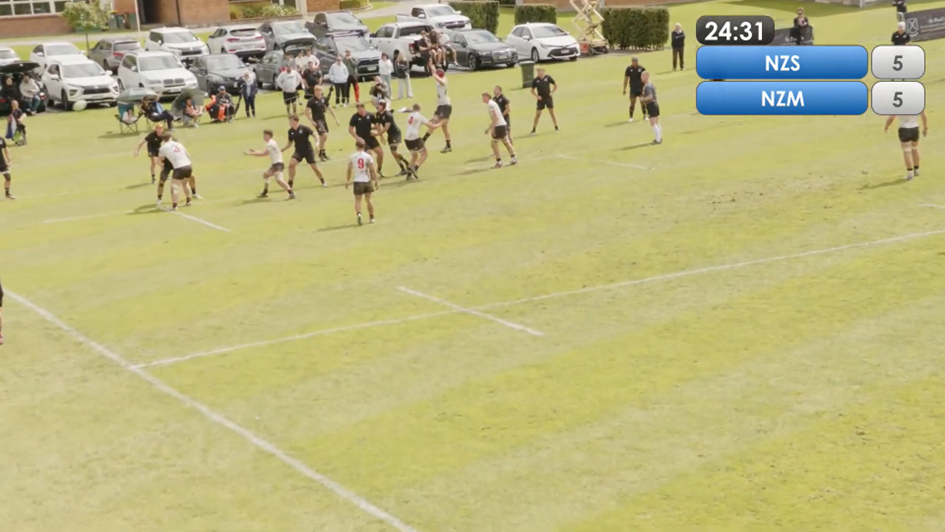
He's even wearing the right number. The openside Broome (white, second from left) does his best Richie-in-Joburg impression.And, finally, a Saumaki knock-on near the 22 after a restart resulted in a Māori U18 scrum. From this scrum the 9, Ngawati, passed to his first five, Rata-Makene, who had multiple running options: Neilson, the 14, running the switch, Waitai-Haenga, the 12, running an overs line, and Crosswell, the 13, running a hard unders line. The actual target is the 15, Brailey, sitting in the boot behind the two midfielders, who is found by Rata-Makene as both NZ Schools midfielders are fixed onto their counterparts, effectively splitting the midfield, with Brailey eventually reaching the tryline.
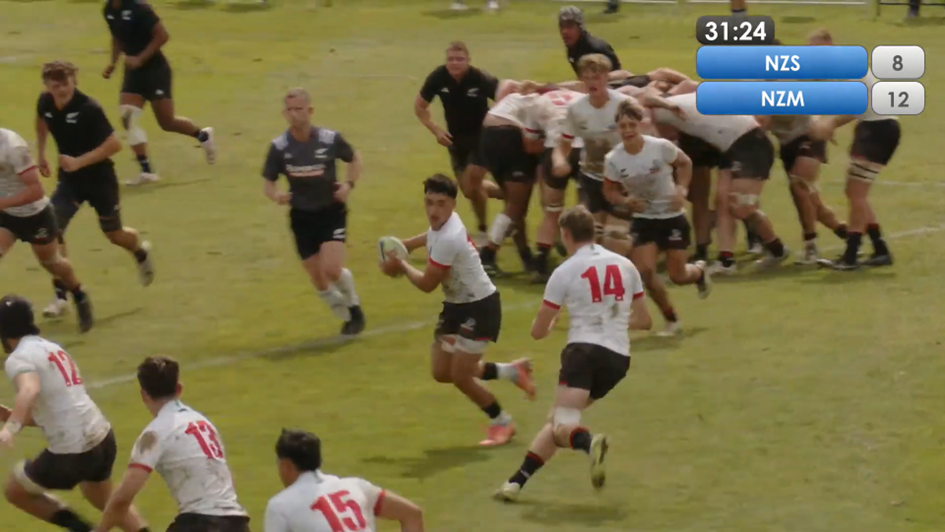
Note also how Broome, the Māori U18 openside (white jersey, top left), has detached early from the scrum to run a blockers line and impede the NZ Schools sweepers from making an effective tackle on Brailey.Whereas the first half displayed the Māori U18s skill in exploiting the NZ Schools’ defensive gaps, the second half exhibited their steel and character in defence. This resolve is less visible in screenshots like those above than it is in raw numbers. Some standouts:
The back five: early in the second half Noah Gregory came on for Oliver Church. The back five of Gregory, Alex Arnold, Caleb Woodley, Jayden Broome and Cruiz Simpson were relentless in their defensive efforts, with Gregory, Arnold and Woodley each making 8 tackles (all numbers from the 2nd half alone), Broome making multiple repeat efforts and Simpson winning 3 lineouts and 2 turnovers. Woodley, the captain, played the full 80, barely standing up by the end of it.
The replacement props: Kane Paranihi en Raharuhi Palmer came on in the 47th minute and combined for 14 tackles in 30 minutes. They each also had multiple hard carries up the middle, scrummed well and contributed in every possible way, with Paranihi even winning a turnover and catching a stray lineout throw.
Le’sharn Reiri-Paku: the diminutive halfback came on for Kah’nal Ngawati in the 55th minute and exemplified the warrior spirit of the team, as he made 6 physical tackles, made a crucial clean preventing a turnover and held up an NZ Schools player, leading to a Māori U18 scrum. It is not often that a replacement halfback actually adds real value to a side under defensive pressure but that is exactly what Reiri-Paku did.
When the whistle blew, it was obvious what the victory meant to this Māori Under 18 Ngā Whatukura team, with great scenes of jubilation. Let me then wrap up with, what I believe, is an appropriate Māori proverb, a Whakataukī, in honor of the team:
Itiiti rearea, teitei kahikatea ka taea.
“Although the rearea (the korimako bird) is small it can ascend the lofty heights of the Kahikatea tree.” Few would have given this Māori U18 side much chance against the much more fancied NZ Schools side. But like the rearea, by working hard and putting all their energy into it, they too can and have been able to reach rare and lofty heights.

